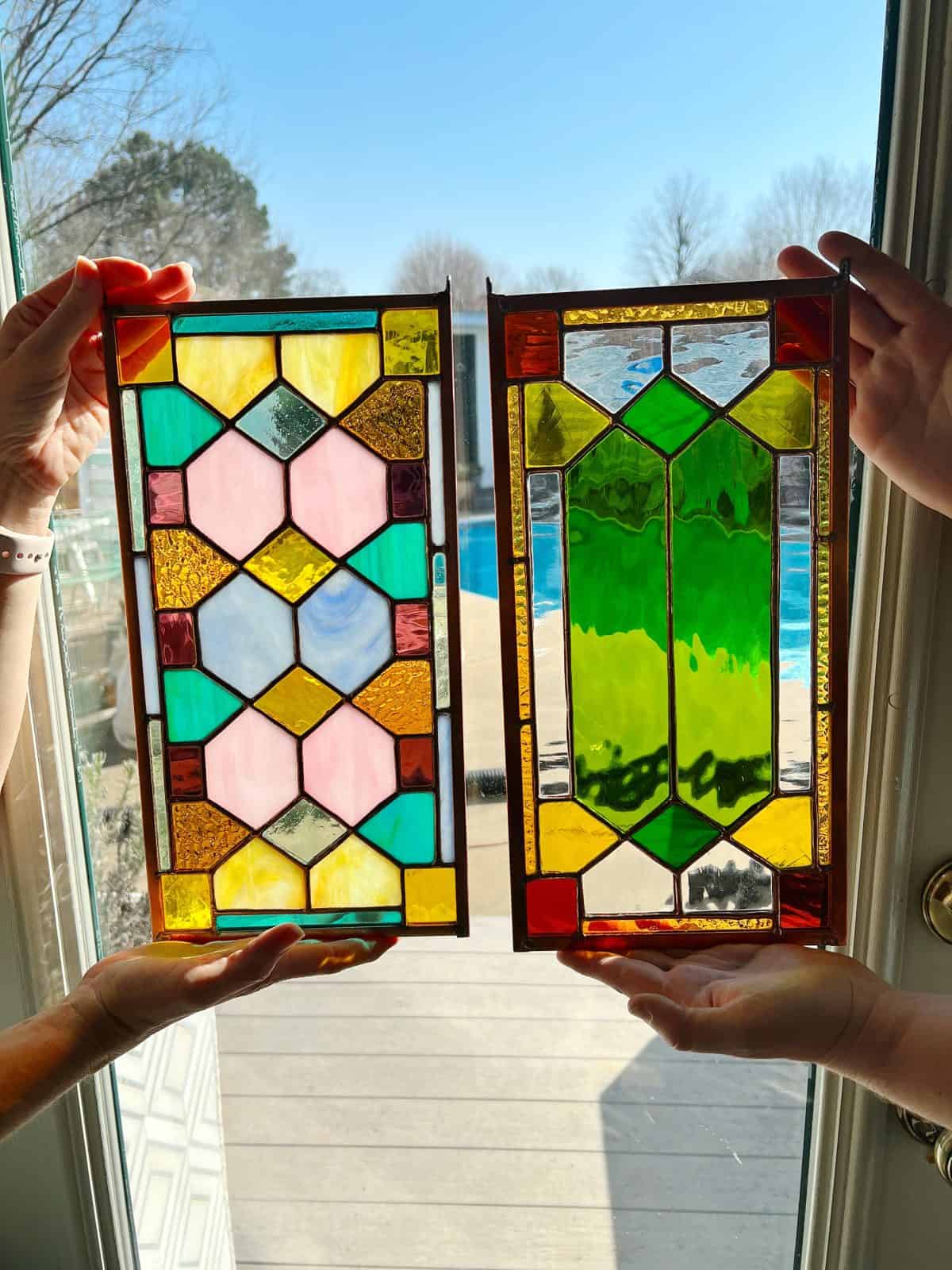Embark on a Colorful Adventure: How to Make a Stained Glass Window
Hello to all the imaginative parents out there! Are you looking to sprinkle some creativity into your home with a touch of color and light? Well, gather up the kiddos, because we’re about to dive into the enchanting world of stained glass window crafting—an activity that’s sure to brighten up your living space and create everlasting memories!
Understanding the Beauty of Stained Glass
Stained glass windows aren’t just for grand cathedrals; they can add a personal and artistic flair to your home too. Besides being a fun project, creating your own stained glass piece is a great opportunity to bond with your children and teach them about art, history, and the interplay of light and color.
What You’ll Need to Get Started
- Glass Cutter: To shape your colorful glass pieces into perfect puzzle parts.
- Glass Pieces: You can either buy colored glass sheets or find smaller pieces in a variety of colors.
- Copper Foil: This will wrap around the edges of your glass pieces, readying them to be soldered.
- Soldering Iron and Solder: These tools will bond your glass pieces together, creating a beautiful, cohesive image.
- Grozing Pliers: They’re important for nibbling away any excess glass to avoid any sharp edges.
- Flux: A chemical agent to help the solder adhere properly to the copper foil.
- Stained Glass Pattern: Choose a design you love, or encourage your children to create their own!
- Safety Gear: Gloves and safety glasses are a must to protect those little hands and eyes during the project.
Gathering Your Materials: A Shopping Excursion
Transforming your living room into a mini-stained glass studio starts with a shopping trip. Many of these items can be found at your local craft store, or you can order them online. The selection process can be a fun excursion itself, as you and your little ones pick out colors and tools for your art project.
Choosing the Right Design
Now, what will it be? A majestic unicorn? A fluttering butterfly? Or perhaps an abstract geometric pattern? When you’re just starting, simpler designs work best. There are countless free patterns available online, or you might choose to draw inspiration from a favorite story or character your child loves.
A suggestion: involve your children in the design phase. Not only does this boost their creativity, but it also ensures they’re even more invested in the project.
Safety First: Prepping Your Work Area
Before you begin, it’s crucial to prioritize safety. Choose a well-ventilated area free of clutter, and make sure to lay down newspapers or a plastic sheet to catch any stray shards of glass. This is the perfect time to have a safety chat with the kids – explain the importance of handling glass carefully and always wearing their safety gear.
Cutting the Glass: A Delicate Art
With your safety equipment on and pattern at hand, it’s time to cut your glass pieces. This step requires focus and a steady hand – and although it’s best done by adults, kids can watch and learn about the process. Show them how each piece will fit into the overall design, like a vibrant jigsaw puzzle.
Remember, patience is key! Glass cutting can be tricky, so take your time to avoid any mistakes.
This is just the beginning of our stained glass window adventure. In the following sections, we’ll dive deeper into the process: discussing how to foil your glass pieces, solder them together, and add the finishing touches that will transform your and your child’s creative vision into a radiant reality.
Stay tuned, fellow crafters, as we shine some light through the beautiful art of stained glass creation – and remember, through this project, you’re not just crafting a window, but a masterpiece of family memories that will captivate the imaginations of all who gaze upon it.

Five Essential Preparations for Crafting Stained Glass with Kids
1. Embrace the Learning Curve
Before diving into the world of stained glass, understand that it’s both an art and a skill. It may take a few attempts to get things right, so it’s important to manage expectations—yours and the little ones’. Start with simple projects that are more forgiving of the learning curve while you and your children get the hang of the necessary techniques.
2. Design Selection and Customization
Pick a design that is not only visually pleasing but also achievable based on your skill level. Consider modifying existing designs to suit your needs. This means resizing patterns or simplifying intricate areas. Remember, the beauty of DIY is making something unique, so encourage your kids to add their personal touch!
3. Prep Work is Key
All good things take preparation, and stained glass is no exception. Prepping your glass pieces, ensuring the copper foil is cut to the right widths, and double-checking that you have enough materials are crucial steps that can make or break your crafting experience. Having everything ready means you’ll be able to maintain a smooth workflow and keep the project fun and stress-free.
4. Safety Discussions
Talk to your children about the importance of safety measures. You’re working with materials that are sharp and hot, and safety can’t be emphasized enough. Ensure that kids understand the tools and their proper use, and why certain steps are only for adults. A good safety talk can save a lot of trouble down the line.
5. Patience with the Process
Stained glass artwork isn’t a “quick” craft, and children may need guidance in understanding that some projects are marathons rather than sprints. Instill patience by breaking the project up into sessions, celebrating small victories, and keeping the atmosphere light and encouraging. Every step, from glass cutting to soldering, is part of the fun!
Soldering and Assembly: The Magic Happens Here
After cutting and grinding your glass to perfection, the next thrilling step is to solder the pieces together. When copper foiling, make sure the edges are fully covered without gaps. Take turns with your kids explaining how the soldering iron works and why it’s important to have even lines when connecting pieces.
When it comes to soldering, it’s an adults-only task. Have the kids stay a safe distance away, but close enough to watch as you guide the molten solder along the copper lines, binding the colorful pieces into one beautiful whole.
Use this moment to teach kids about the importance of care and precision, and how heat can transform and meld materials together—science in action!
The Finishing Touch: Framing and Displaying Your Masterpiece
The crowning glory of your stained glass adventure is framing and hanging your completed work. Depending on its size, you may choose a sturdy window frame, or for smaller projects, a simple hanging chain will do just fine. Get the children involved in picking the perfect spot to showcase your collaborative effort, where the sun can hit it just right and fill your home with splashes of color.
As you call your stained glass project complete, step back and admire the wondrous play of light cascading through your handcrafted artwork. It’s a reminder of the joy and teamwork that brings a family closer together. Each time the light filters through those vibrant hues, you’ll remember the shared laughs, the small challenges overcome, and the magic of creating something beautiful as a family.
So, what are you waiting for? Put on your crafty caps, round up the troops, and embark on a DIY journey that promises to infuse your home with light, color, and a treasure trove of happy memories. Your DIY stained glass windows await!
See more great Things to Do with Kids in New Zealand here. For more information see here
Disclaimer
The articles available via our website provide general information only and we strongly urge readers to exercise caution and conduct their own thorough research and fact-checking. The information presented should not be taken as absolute truth, and, to the maximum extent permitted by law, we will not be held liable for any inaccuracies or errors in the content. It is essential for individuals to independently verify and validate the information before making any decisions or taking any actions based on the articles.




